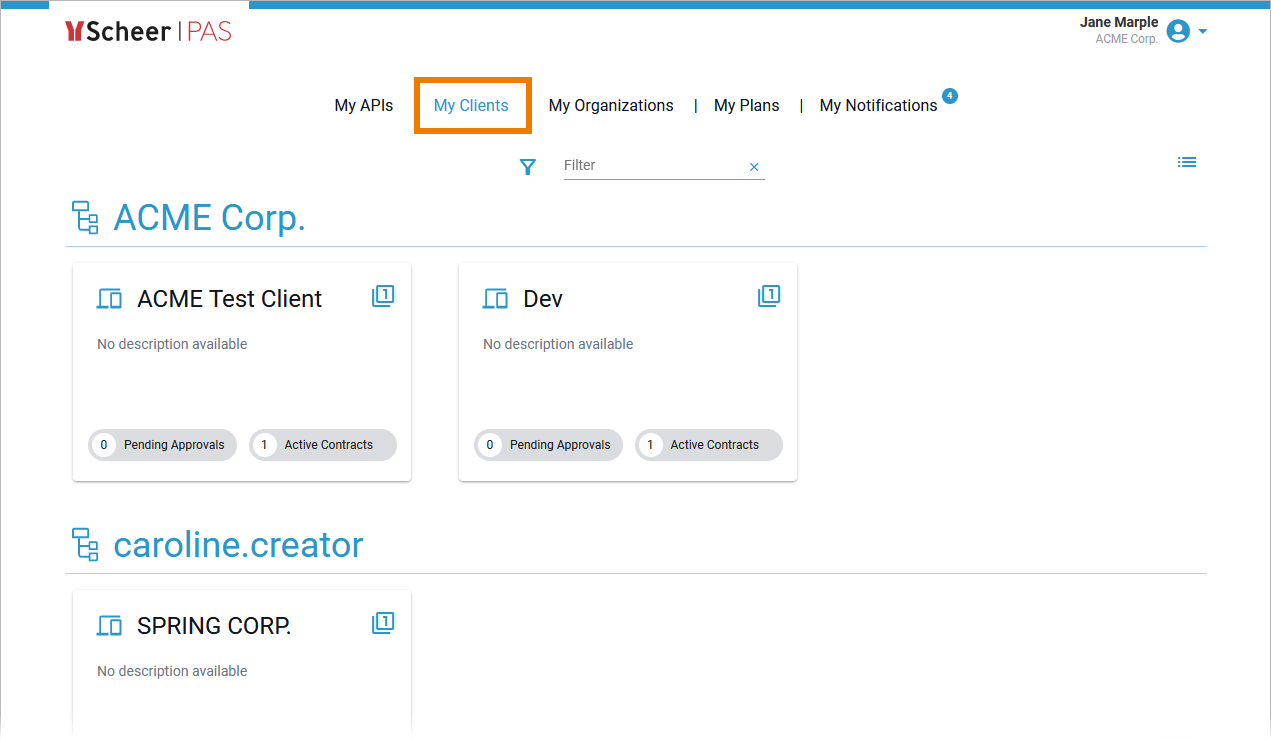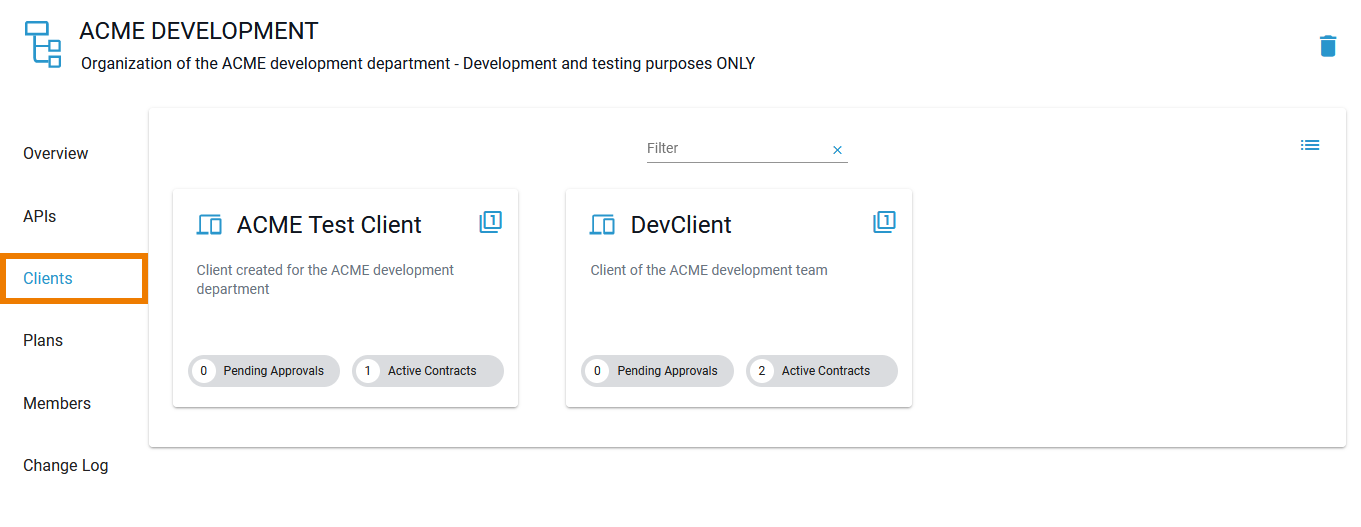- Created by Annegret Bernhardt, last modified on Jan 12, 2024
Clients must exist within the context of an organization. To view all clients your user is allowed to see, go to tab My Clients in the navigation bar.
| The clients are listed by organizations. For detailed information about navigating and filtering the list refer to Working With the API Management. |
| You can also view the list of existing clients for an organization by navigating to the Clients tab of the organization's details page. Click on a client tile to open the client's details page. Use the details page to modify the configuration. |
Basic Settings
The Overview tab displays the most important information about a client and also offers various functionalities:
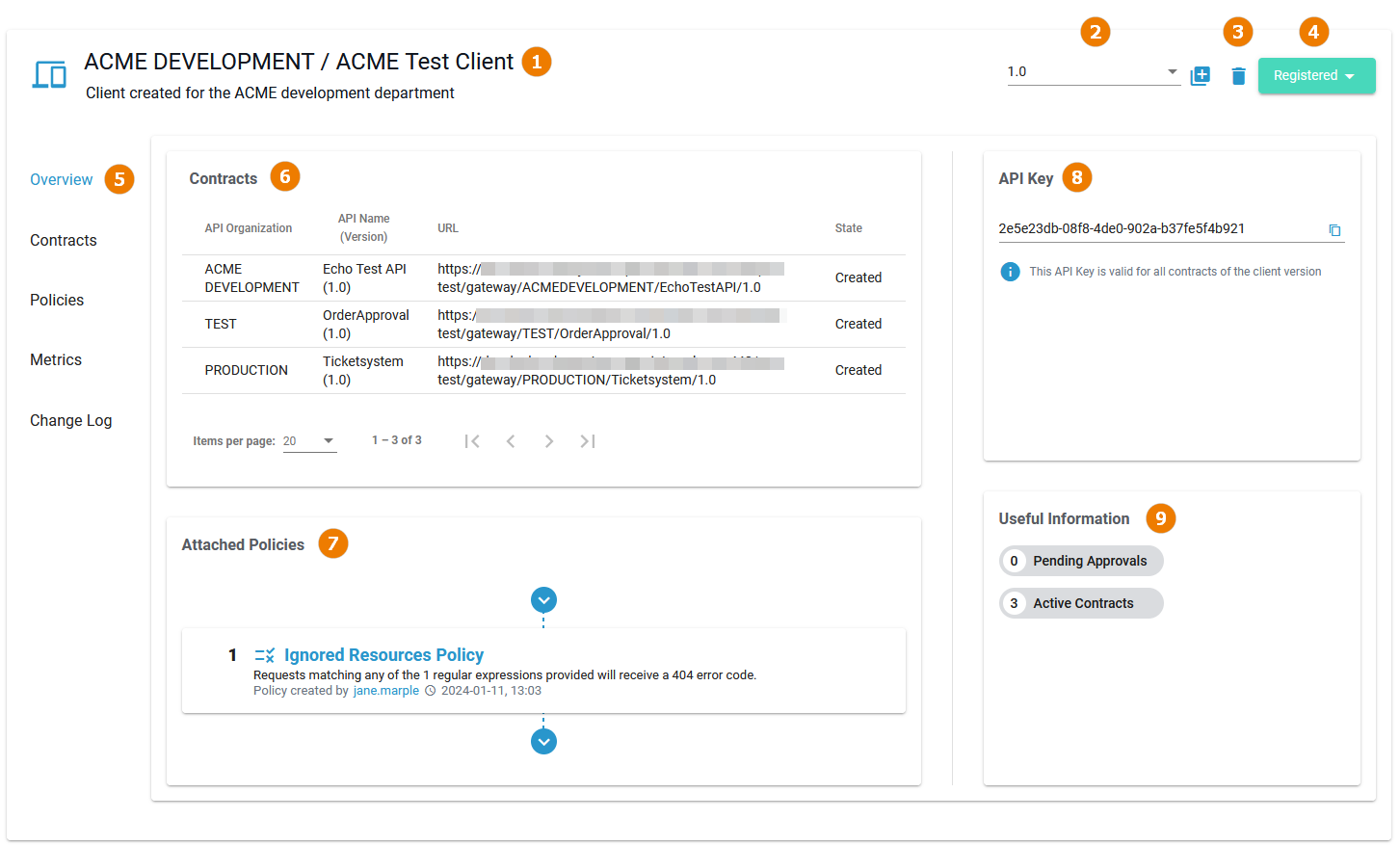
| UI Element | Name | Description |
|---|---|---|
| Basic Settings (available in all tabs) | ||
| 1 | Name / Description |
This setting is valid for all versions of the client. |
| 2 | Version | In this field, the current version of the client is displayed. Use the drop-down to switch between versions. To create a new version, click New Version |
| 3 | Delete | Click Delete |
| 4 | Status | In this field, the current status of the client is displayed. Use the drop-down to change the status. A client can have the following states:
|
| 5 | Navigation Bar | Use the navigation bar to access the various tabs of the client's details page (details of all tabs see below). |
| Overview Tab Settings (available only in tab Overview) | ||
| 6 | Contracts | Shows the number of contracts associated with this client. Click in the URL field to copy the displayed URL. |
| 7 | Attached Policies | In this section, the user can see at a glance which policies are attached to this client and in which order they will be executed. You can click on the name of a policy. This will open tab Policies where you can adapt the policies of this client. |
| 8 | API Key | Displays the API Key for all contracts of this client version. An API Key is automatically created when you are using a private API. To copy the API Key, click Copy to clipboard |
| 9 | Useful Information | The displayed labels show some additional information about the client. The labels are interactive: Click on an entry to switch to the corresponding tab.
|
Client Details
In the navigation bar of the details page, you will find several tabs where you can manage the various settings of the client.
Contracts
Use tab Contracts to display a list of all contracts between this client all APIs. The list includes all APIs that this client can use, and also the APIs for which this client is still waiting for approval (refer to Handling Approval Requests for details):
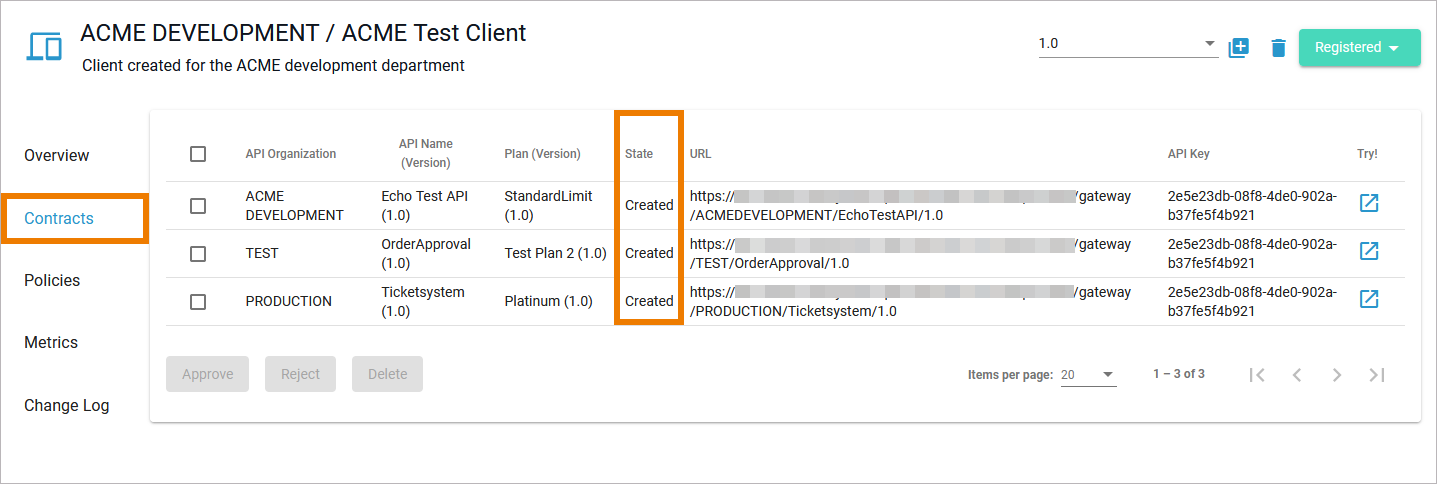
Policies
The Policies tab allows you to manage the policies that should be applied whenever an API invocation is made by the client. These policies are applied in addition to whatever policies are defined by the API itself. The order of the policies is important: The order in which the policies appear in the user interface determines the order they will be applied at runtime (refer to Policies > Policy Chain for details).
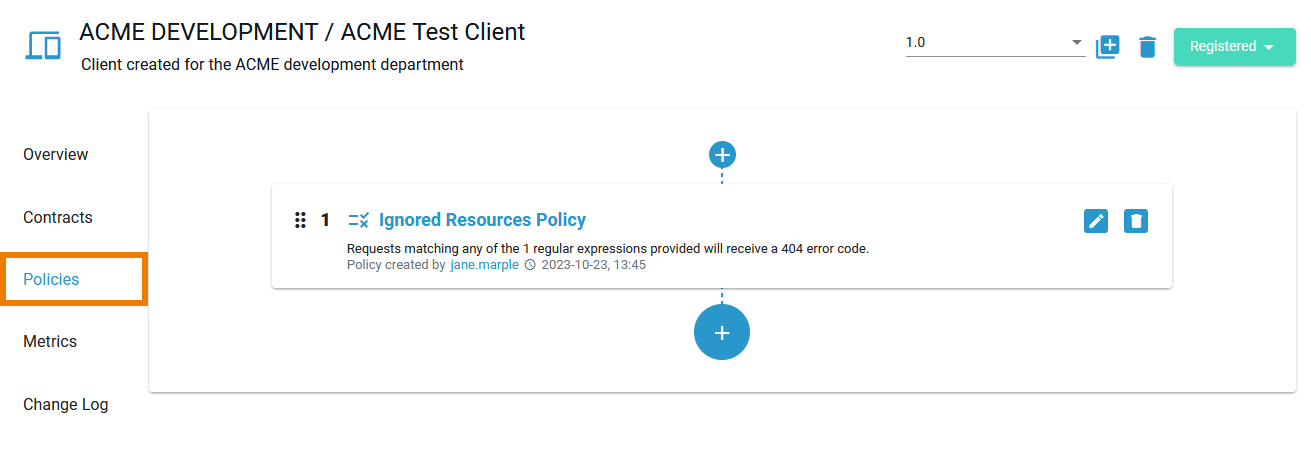
To add another policy to this client, click one of the Plus buttons  . You will be redirected to page Add Policy, where you can choose a policy and customize it (refer to Attaching Policies for details). If you want to adapt an attached policy, click Edit
. You will be redirected to page Add Policy, where you can choose a policy and customize it (refer to Attaching Policies for details). If you want to adapt an attached policy, click Edit  to open the policy configuration. If you want to delete a policy from this client, click Delete
to open the policy configuration. If you want to delete a policy from this client, click Delete  .
.
Refer to chapter Policies for an overview of the standard policies supplied with Scheer PAS API Management. Page Attaching Policies explains how to attach and configure a policy.
Metrics
Navigate to tab Metrics to display metric information about the client. Once a client has consumed an API, you can use the Metrics tab to view basic analytics information.
Refer to Metrics for detailed information about the available options.

Change Log
Navigate to the Change Log tab if you want to see an overview of changes made for this client. All configuration changes made by API Management users associated with this client are listed here:
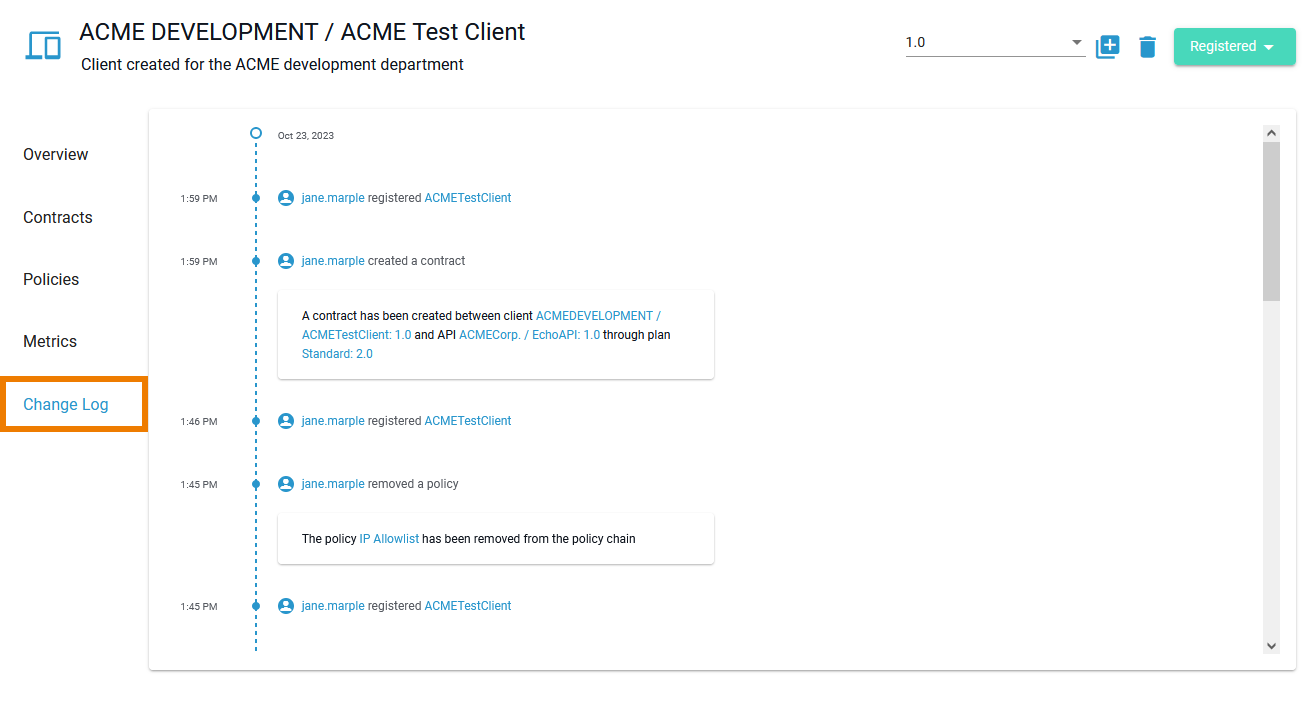
- No labels
